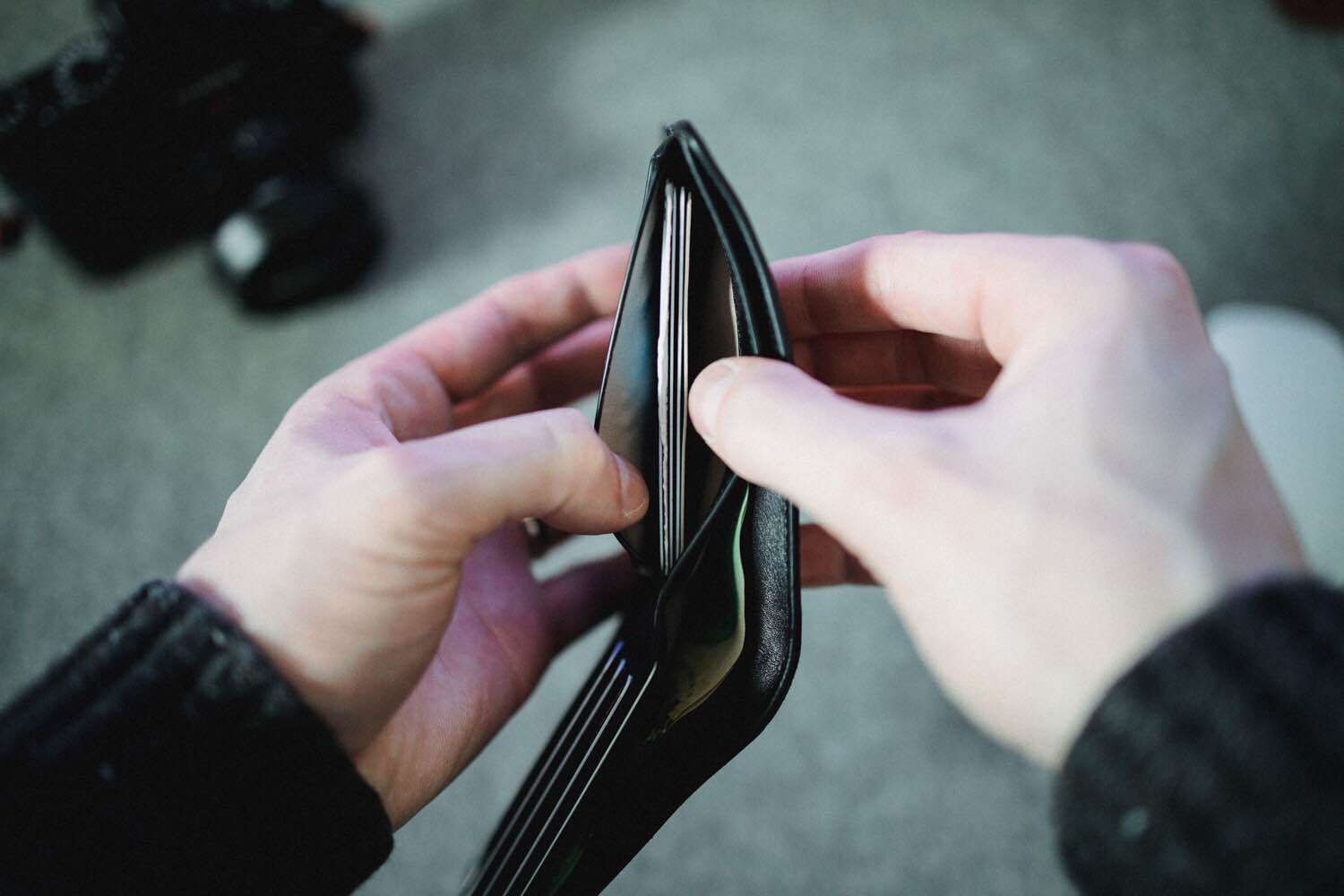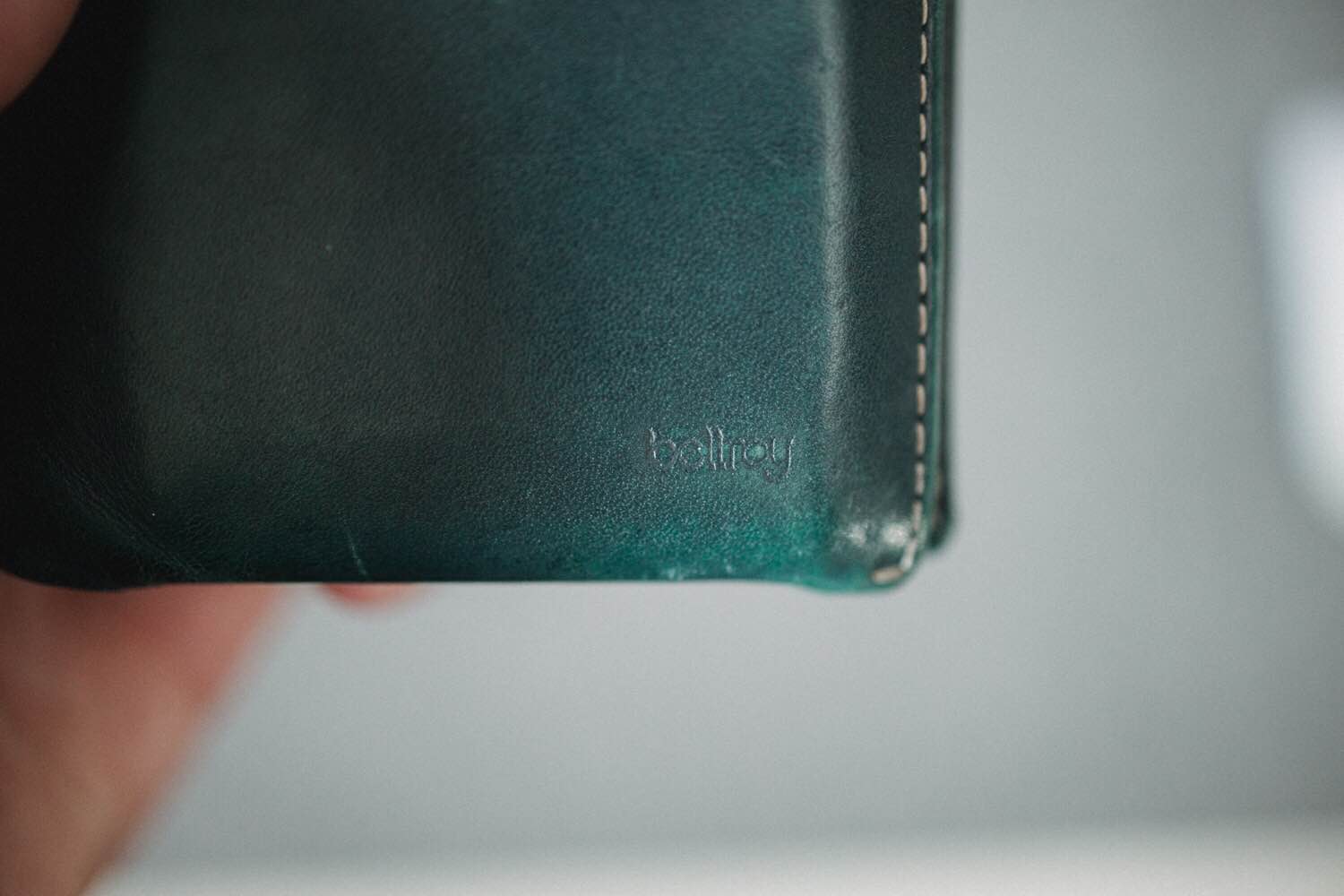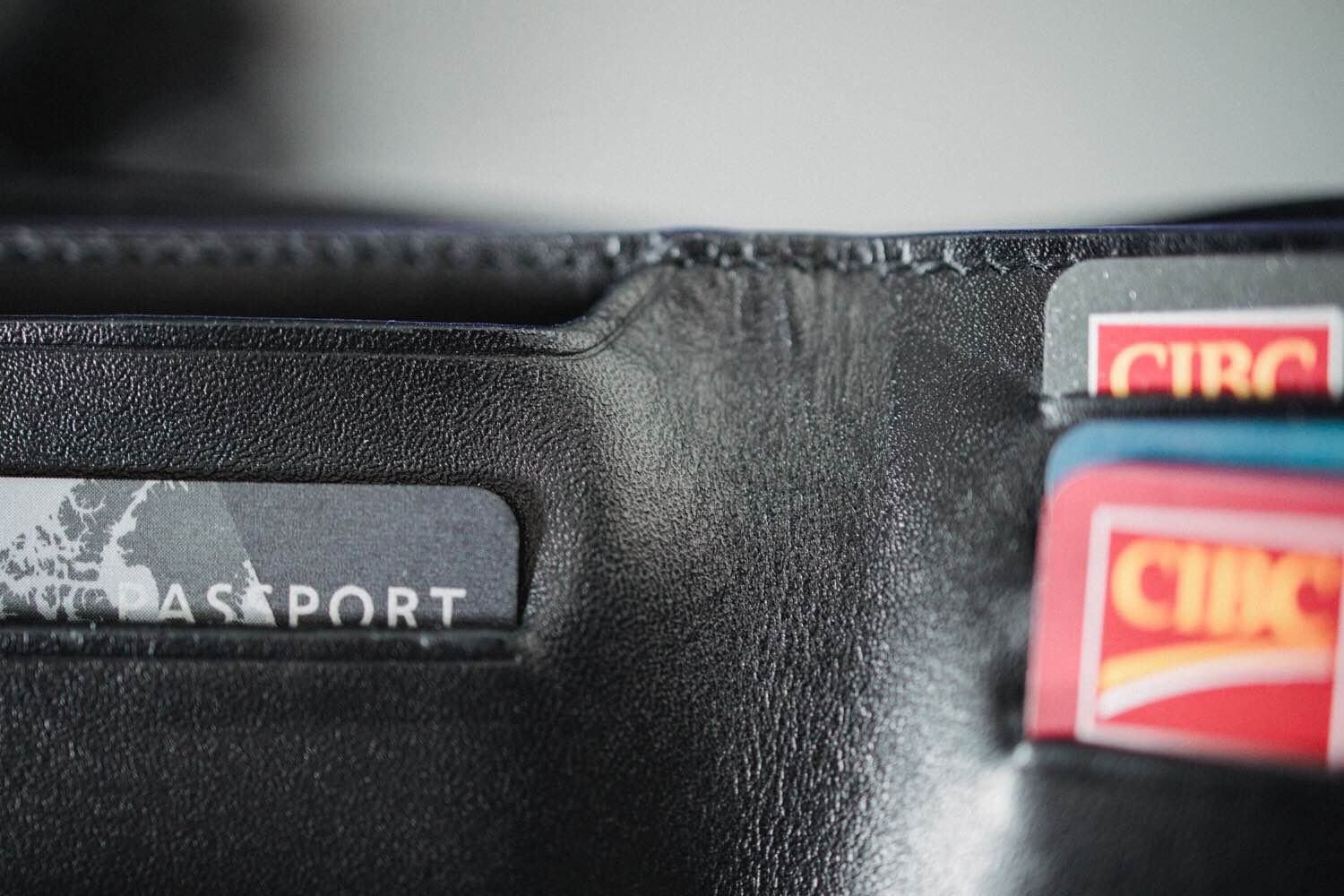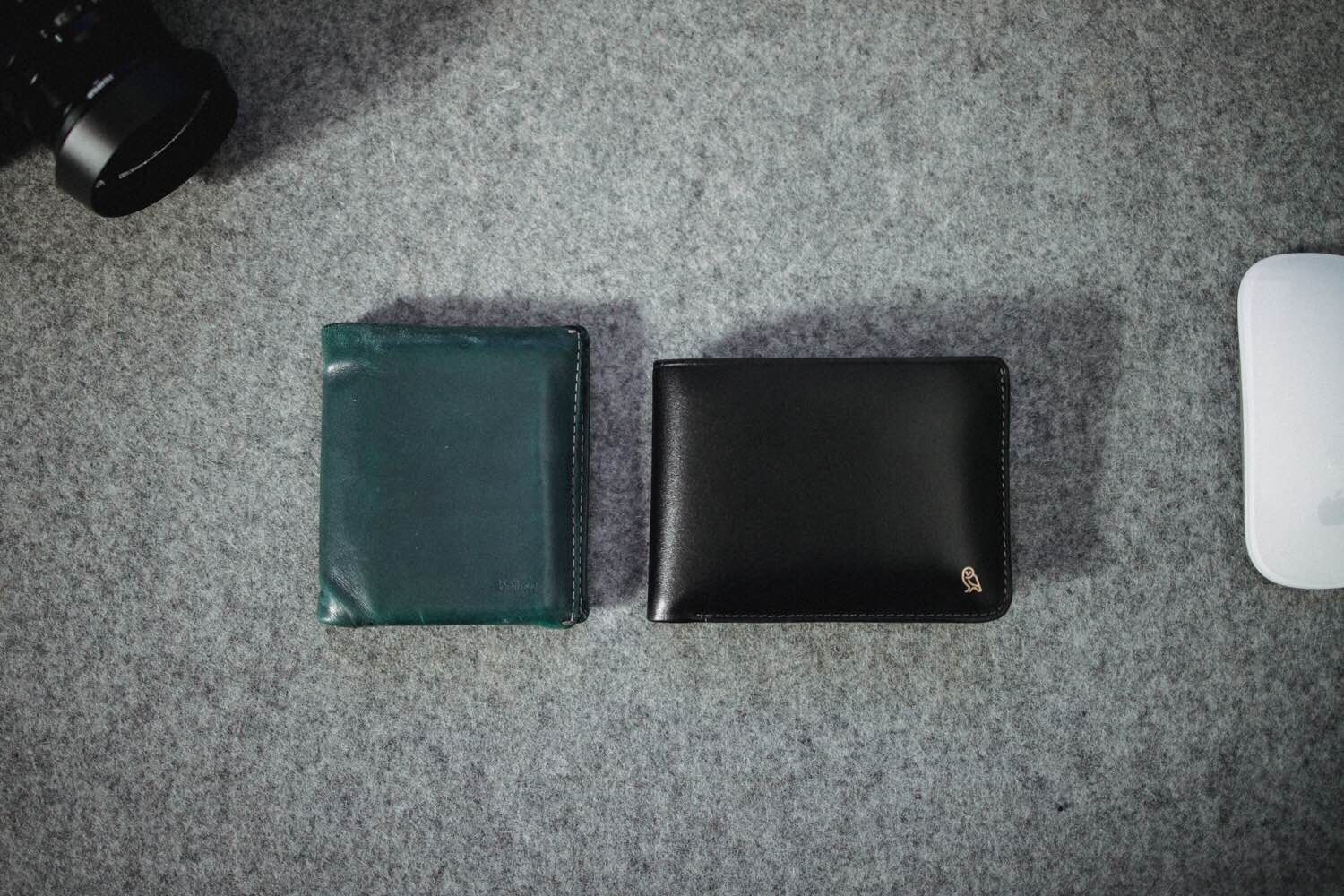One of my favorite products of the last five or six years has been the Bellroy Note Sleeve. I bounced around from wallet to wallet for years, searching high and low for a wallet I thought looked good, felt good, lasted a long time, and carried everything I needed.
The Note Sleeve was an end-game wallet for me in 2016, and I haven’t looked for a new one since.
I’ve changed somewhat though. I no longer need a wallet that can carry Canadian polymer cash, American greenbacks, and Euros or Pounds Sterling all at once. I almost never need coins anymore. And the little pull-tab section of the Note Sleeve has accumulated more than enough junk to cause the wallet to become noticeable in my pants pocket.
There’s still plenty of life left in my Note Sleeve. Maybe I’ll return to it one day. But right now, I wanted something I could pull out of a pair of dress pants or a suit jacket and not look out of place. And, more than anything, I wanted something just a bit slimmer for tighter-fitting jeans and pants.

Enter Bellroy’s Hide & Seek. The Hide & Seek is essentially Bellroy’s “other” top-selling wallet. It’s a more traditional bi-fold, in the sense that it carries cards horizontally on the right and left, has a cash slot at the top, and folds in half to fit in your pocket. But there are a range of hidden features in this wallet — hence the name “Hide & Seek” — which I’ve come to really appreciate over the last few weeks.
Like the Note Sleeve, the Hide & Seek is not a perfect wallet. But for my current stage in life — the sedentary, go-to-the-office-everyday sort of life stage — the Hide & Seek fits the bill perfectly. Pun intended.
Materials and Leather
There’s so much leather in my life. I adore leather. I have a leather couch, leather Bibles, leather Field Notes covers, leather Midori Traveler’s Notebooks, leather baseball gloves, and of course, leather wallets. (No leather jackets though.)
It’s nice being able to compare each type of leather to their intended use. It makes a lot of sense that a leather wallet isn’t the same type or cut of leather as, say, a brand new Wilson baseball glove.


But, the differences are much more subtle when you compare alike tools, such as two different wallets. My Bellroy Note Sleeve is made of a “dressed” leather (per Bellroy), while this Hide & Seek is of Bellroy’s “Designers Edition” line. Bellroy’s description:
We’ve selected unique, environmentally certified leathers that are distinguished by their level of complexity in texture, finish and soft touch. These leathers are the cornerstone of the Designers Edition range, distinguished by their complexity in texture, finish and soft touch. Where possible, this leather has been left to sweep or wrap through each product to minimize corners, maximize space and enhance the flow of leather.
The differences between the two leathers are very, very subtle. Noticeable, but subtle.

“Distinctive and Complex” is how Bellroy’s subtitle reads, which aren’t the two adjectives that come to my mind when looking at and feeling the Hide & Seek’s leather. To my mind, the Hide & Seek’s European leather feels softer to the touch, but stiffer in use. The burnished edges are nicely finished, with the black stitching rounding the edges in perfect fashion.
The black leather color doesn’t show wear as quickly as my colored Note Sleeve, and provides a subtly sophisticated silhouette when you pull it from your pocket.



Above, you can see how the “Dressed” leather ages over three years of use.
Now, this is my best depiction of the Hide & Seek Designers Edition line, but you don’t need to purchase the Designers Edition Hide & Seek to take advantage of the Hide & Seek’s features.
If you go with the standard “dressed” leather version, you get the same leather quality and feel as the Note Sleeve seen in these photos, plus you have added color options and a physical, metal version of Bellroy’s owl emblem on the front.

On my specific version of the Hide & Seek, the Bellroy owl logo is gold foil-stamped to the bottom right of the wallet’s front, while “Bellroy, Designers Edition” is gold foil-stamped on the inside left of the wallet. I’m unsure how well these gold foil logos will age, or whether they’ll wear away.
The Hide & Seek is leather from nearly top to bottom, with the only non-leather materials I can find being in the billfold at the top. Inside the billfold appears to be a beige nylon material which helps keep the overall Hide & Seek package as slim as possible.
This particular Hide & Seek has RFID protection to help fight against any card skimmers out there. I’m unsure if RFID protection is either practical or has an actual use in real life — to the contrary, I’ve heard it doesn’t actually provide any security at all — but it’s built into this wallet if you need it.
Overall, there’s little in the way of imagination when it comes to the Hide & Seek’s leather and materials. This wallet has Bellroy’s very best leathers, designed in such a way as to maintain thinness, increase durability, and ensure that its sleek appearance will be maintained for years on end.
Key Wallet Features
From here on out, the Hide & Seek Designers Edition is effectively the same as any of Bellroy’s other Hide & Seek wallets.
The simple Hide & Seek bifold design appears to be a traditional wallet upon first view, but can somehow jam 12+ cards, coins, and multiple sets of currencies into its thin frame.

On the right are three horizontal quick-access card slots for your most used cards. Each card slot was extremely tight when I first inserted all my bank cards — this wallet requires a bit of use before it’ll meet expectations. But after a little massaging, each card fits snugly and securely and won’t be sliding out inadvertently.
On the left is an additional horizontal quick-access card slot, as well as a much thicker/wider slot for cramming in less-used cards. In this slot, I keep my Air Miles rewards card, some health and medical cards, an emergency credit card, and other essential papers.
Even after hammering in this number of cards, there’s still plenty of room to be had. I don’t think I’d struggle to insert at least another three cards before the wallet started to feel thick.


The angled cut-outs for this slot make it extra flexible, providing easier access to the stuffed slot.

You’ll notice that the way this slot is cut and stitched helps provide more room and flexibility for storing less-used cards. The top right section of the slot is cut and stitched at an angle to the main wallet body, while the bottom left of the slot is also angled. This angled cut provides more flexibility in the leather and highlights Bellroy’s inquisitive thinking in its wallet designs.

The main billfold comes in two different sizes, depending on your needs:
- “Lo” for bills shorter than 74mm (this is the one you see listed on Amazon)
- “Hi” for bills taller than 74mm (only available from Bellroy’s site)
Both wallets cost the same amount, so you simply need to decide which currency sizes you carry around most often. This is one of those features that falls short of the Note Sleeve’s design — the Note Sleeve is a “Hi” wallet by default due to its vertical card slots (more on that below) and can fit multiple heights of currency with ease.
However! The Hide & Seek, due to its horizontal card slots, provides more horizontal space for fitting in currency. So while it’s not capable of holding multiple currencies, it’s significantly easier to insert and take out cash from the Hide & Seek.

On the inside, inverse of the billfold is one additional card slot for hiding other cards. It’s designed to be a thicker card slot that can hold multiple cards, but I’ve nestled just my drivers license into this slot. My drivers license card is somewhat shiny and slippery, meaning it slides in and out of this thicker card slot quite easily. It hasn’t slid out of the wallet or anything, but it’s very easy to remove the card from this slot.
I’d say it’s wise to keep two cards in this slot instead of just one.


If you pull back the back leather strip, you’ll reveal a second billfold section for hiding a second set of currency. This is where the “Hide & Seek” moniker comes into play — you can very easily hide another set of currency or some emergency cash in this back part of your wallet without ever knowing its there.
If you prefer, you can fold this leather strip down and use the two separate billfold slots for storing two different currencies, or for separating currency from receipts. I personally keep a little American cash in this back billfold slot and fold the leather strip to hide the cash.
Directly Compared to the Note Sleeve

Since the Hide & Seek and the Note Sleeve are two of Bellroy’s most popular wallet lines, it’d be best to understand what each one excels at and where each falls short.
The way each wallet positions its card slots provides fundamental differences in how these wallets work and how they sit in your pocket. The Hide & Seek has horizontal card slots like more traditional wallets. This makes the Hide & Seek a larger overall wallet than the Note Sleeve, which is surprisingly noticeable in my pants pocket.

The thickness of the Note Sleeve, albeit after three years of smooshing and flattening in my pocket.
The Hide & Seek package is longer than the Note Sleeve, but also has a thinner profile than the Note Sleeve.

I get that the Hide & Seek doesn’t look as thin as the Note Sleeve, but I haven’t had the chance to really compact this one yet.
If you have small square pockets, the Note Sleeve may well fit better than the Hide & Seek. The Hide & Seek’s thinner profile, however, fits nicer in tighter pants with longer pockets.


The horizontal vs vertical card slot dichotomy also has an impact on inserting and removing both cards and cash. I’ve found I prefer removing cards from vertical card slots in the Note Sleeve, as it’s easier to slide the card out of the slot with your thumb.
However, the Hide & Seek’s thicker “catch-all” card slot doesn’t require the pull tab found in the Note Sleeve. In this instance, I’ve found it easier to find and remove my required card from the Hide & Seek’s catch-all card slot.


Notice how snugly the cash fits into the Note Sleeve. There’s much more space in the Hide & Seek.
Removing and inserting cash from the Hide & Seek is a major improvement over the Note Sleeve. Canadian cash in particular fits into the Note Sleeve quite snugly, at least horizontally — the tolerance between the length of Canadian cash and the length of the Note Sleeve is pretty small. The Hide & Seek is a bit longer, providing more forgiveness when inserting cash into the billfold.
This doesn’t seem like a huge improvement — until you’re in the middle of a conversation with the cashier and have to break your focus to insert bills into the snug billfold of the Note Sleeve. With the Hide & Seek, you don’t need to break eye contact and can continue your conversation with no distractions.
Wrap Up
The slogan, “Different strokes for different folks” should be rebranded as, “Different wallets for different… folks” — there’s simply no catch-all wallet design that will meet the needs of everyone, everywhere.
For a long time, I thought the Note Sleeve’s design was the pinnacle of wallet design. It managed to keep a relatively small and thin package while providing space for multiple currency heights, coins, quick-access slots, and more. If you’re the type where coins, multiple currencies, and only a select few cards are necessary on a given day, the Note Sleeve may be your pinnacle wallet.
But my needs have changed over time — my wife and I now have two little girls, and the opportunity to travel has really diminished as a result. We also have more things to carry with us on a daily basis, such as health cards, immunization records, and so on.
With the change in daily carry comes a change in my wallet needs — very little travel means less of a need for carrying multiple currencies and more of a need for accessing those formerly less-used cards.
To this end, I’ve been very pleased with Bellroy’s Hide & Seek. The traditional design fits well in my dress pants pockets, provides more forgiveness for inserting or removing cash, and the extra billfold slot for keeping cash and receipts separate is sure to be a bonus feature as time goes on.
Plus, Bellroy’s choice of leather for this Designers Edition line is second to none — I’ve played with numerous Bellroy leathers over the years, and none meet the fit and finish of this Designers Edition wallet.
If you can nail down your needs — currencies vs. receipts, square vs. long, etc. — you’re sure to find a near perfect wallet between the Note Sleeve and the Hide & Seek. I’m on the Hide & Seek train right now, but I’m keeping the Note Sleeve around to return to when the itch arises.